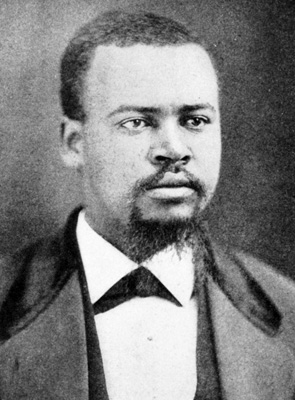John Adams Hyman facts for kids
Quick facts for kids
John Adams Hyman
|
|
|---|---|
 |
|
| Member of the U.S. House of Representatives from North Carolina's 2nd district |
|
| In office March 4, 1875 – March 3, 1877 |
|
| Preceded by | Charles R. Thomas |
| Succeeded by | Curtis Hooks Brogden |
| Member of the North Carolina Senate | |
| In office 1868–1874 |
|
| Personal details | |
| Born | July 23, 1840 near Warrenton, North Carolina |
| Died | September 14, 1891 (aged 51) Washington, D.C. |
| Political party | Republican |
John Adams Hyman (born July 23, 1840 – died September 14, 1891) was an important American politician from North Carolina. He made history as the first African American to represent North Carolina in the United States House of Representatives. He served in Congress from 1875 to 1877.
Contents
Early Life and Learning
John Hyman was born into slavery in 1840 near Warrenton, North Carolina. As a child, he was not allowed to go to school. When he was older, he worked for a jeweler who secretly taught him to read and write. When this was discovered, the jeweler had to leave town. John kept trying to learn, but because of this, he was sold to a new owner in Alabama when he was 21 years old. During his 25 years as an enslaved person, John Hyman was sold at least eight times.
Becoming a Leader After the Civil War
After the American Civil War ended and enslaved people became free, John Hyman returned to North Carolina in 1865. He worked as a farmer and continued to study on his own.
People soon recognized John Hyman's leadership skills. He was chosen to be a delegate (a representative) at a state meeting for equal rights in 1865. He also helped write the state's new constitution in 1868.
Serving in the North Carolina Senate
John Hyman was elected to the North Carolina Senate, which is part of the state's government. He served there from 1868 to 1874. This was during the Reconstruction era, a time when the Southern states were being rebuilt after the Civil War.
Election to Congress
In 1874, John Hyman was elected to the United States House of Representatives. He was a member of the Republican Party. He represented North Carolina's 2nd congressional district, which included many counties with a large African American population. This area became known as the "Black Second" because its voters often elected African American representatives.
Hyman served one term in Congress, from March 4, 1875, to March 3, 1877. After his time in Congress, he returned to farming. He later moved to Washington, D.C., where he worked for the United States Post Office Department and the United States Department of Agriculture. He passed away in Washington, D.C., on September 14, 1891, and was buried in Columbian Harmony Cemetery.
Family Life
John Hyman was married and had four children.
Honors and Remembered Legacy
- A historical marker has been placed in Warrenton, North Carolina, to honor John Hyman and his important contributions.
See also

